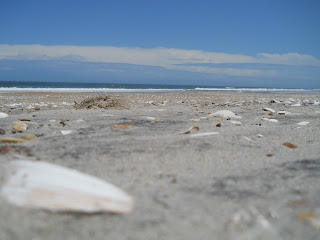Fort Belvoir May 29
There’s a code of the road that bicyclists come to understand after they’ve put in a good many miles.
1. Old men sitting under trees playing checkers, cards, whatever on picnic tables always wave.
2. Spandex-clad riders of thin-wheeled extra light bikes never wave or even acknowledge fellow cyclists’ existence. They seem to be too focused on establishing a personal best time, speed, VOX rate, distance, etc.
3. Families having picnics or cookouts generally all wave.
4. Almost every dog will chase you. I guess you appear to be an easy meal compared to a 50 mph car.
5. Front-porch sitting folk wave as do, generally, folks riding their lawn mowers.
6. Trucker drivers are not very friendly.
7. Only 1 in 50 people will ask to help you when you look lost standing there holding your map.
8. Motorcyclists never ever wave at someone so lowly and slow as a bicyclist, despite our shared heritage of two wheels. They won’t even talk to you should you both stop at the same convenience store.
9. No one in a fast food restaurant has ever asked me what I’m doing, despite my garish garb. Two waitresses in sit-down restaurants have asked.
10. Most drivers see you as a nuisance, someone who makes them veer or slow down from their path. A few will slow down to shout that you should be riding on the sidewalk, if there is one. In fact, the majority of states classify bicycles as vehicles and require them to take the road unless there is a designated bike path. Since a cyclist is operating a vehicle, bicyclists in these states must obey all applicable traffic laws, i.e., stop at all traffic lights, indicate turns, obey traffic signs, etc. Virtually no motorists or cyclists know or obey these laws.
11. Bicyclists coming up behind you never let you know they are approaching you, as cycling courtesy requires. By saying "passing on the left" or "behind on the left" you make the front rider aware not to veer to the left into the path of the on-coming bike.
11. Bicyclists coming up behind you never let you know they are approaching you, as cycling courtesy requires. By saying "passing on the left" or "behind on the left" you make the front rider aware not to veer to the left into the path of the on-coming bike.
A driver pulled next to me today and stopped. She was in the road and made no effort to pull off to the side. Cars behind her slammed to a stop. She rolled down her window. “Is this the way to Fredericksburg,” she shouted as horns blared behind her.
This was the third time I’ve been asked for directions. What makes people think that a guy on a bicycle loaded down with saddlebags and camping gear while wearing an orange shirt stating “Deirdre’s ride for ALS” would have any idea of where local streets are?
What made today’s request more aggravating was that the driver stopped as we were half way up a hill. She zipped away while I had to struggle to get back into hill-climbing mode.
 |
| A rapidly vanishing gasoline sign. |
To make a donation to the ALSA, please go to: http://web.alsa.org/goto/deirdresride










































